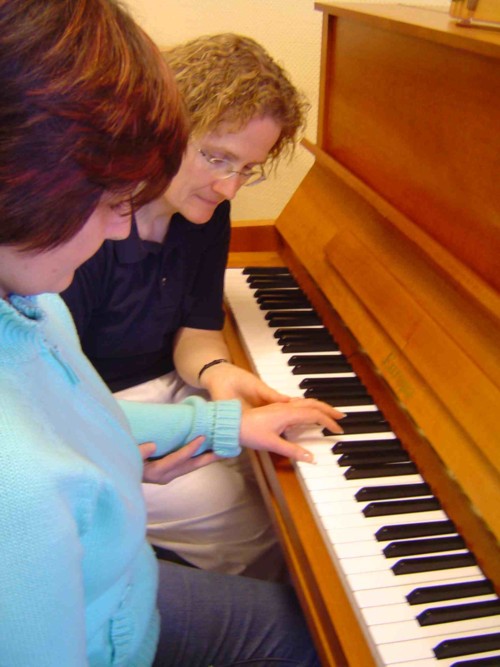
There is still no causal cure for Parkinson's disease. If drug therapies do not help or no longer help sufficiently, those affected can seek treatment in special clinics. Some of these specialist hospitals or neuro-rehab clinics also offer music therapy. This is an important accompanying therapy for Parkinson's disease.

By RAS - Gait training people with Parkinson's can improve their ability to walk with music or a metronome. Depending on the target, you can work on a longer stride, a stronger arm swing or a safer gait. It is crucial for a successful therapy to decide to the right Training music. The exercise pace is individually adjusted therapeutically. If walking is slow, the pace is accelerated. Conversely, if gait instability is present, slower paces of 95 to a maximum of 105 bpm should be chosen. Music Find perfectly tailored playlists and downloads to enrich and improve your daily exercise routine.
This is also the case with the Beelitz musical gymnastics. It was developed by the therapists from the Beelitz-Heilstätten Parkinson Center for self-training at home by people affected by Parkinson's disease. You can do this via the Parkinson Center 2 CDs with photo brochure relate.
An app has also been developed at the Parkinson Center Beelitz-Heilstätten that generates musical movement feedback for gait training. This app is called CuraSwing, It is tailored to the needs of Parkinson's patients. The app enables personalized gait training with music to help users stay active every day.
In cases of gait blockage – the so-called Freezing Rhythmic training with a metronome often helps to regain a smoother gait. This is practiced at a significantly slower speed. Another way to overcome these blocks is so-called "mental singing" while walking. Here, those affected learn to concentrate on one specific song chosen for them while walking. Again, a rather slow tempo is crucial. For pronounced starting blocks, "Hänschen klein," a simple but very clearly structured German children's song, is particularly suitable.
By therapeutic singing Parkinson's patients can intensively train their voice and breathing. The voice quality and breath-voice coordination improves. This also has positive effects on speaking and therefore communication. The songs are adapted to the vocal pitch and vocal symptoms. Optimal training is then possible and useful even with Parkinson's-related hypophonia. Under equipment you will find the LiLa songbook to print yourself, including links for therapeutic karaoke. The Karafun app is also suitable for this, as it allows you to individually adjust the tempo and pitch.
In the dance music therapy Movements are playfully trained to circle, block or pair dances. In addition to the strong therapeutic effect for mobility and coordination, people suffering from Parkinson's can also regain the joy of exercise. (You too News: Dancing helps at Parkinson's)
At the Rhythmic speech training learn to articulate patients who were previously difficult to understand more clearly in time. Many of those affected suffer from a reduction in swallowing frequency. For this the Swallow Ringer developed. In the Instrumental improvisation Parkinson’s inexperienced musically can also try out musical instruments. In individual or group therapy, this method promotes disease processing in addition to motor skills. As such, it corresponds to one Music therapy psychotherapy. At the Music-based Fine motor skills training hands and fingers can be trained in such a way that activities in everyday life are easier again.
The diverse effects of music on relaxation, improving mood and drive, and stimulating mobility and walking in Parkinson’s disease can be exploited by personal playlist With such a playlist you can target the Gait or influence the current mood.
For more information on walking with music for Parkinson's disease, see this review article “Music stimulates muscles, mind, and feelings in one go”And in the podcast IQ Wissenschaft from BR on March 11, 2025 with Prof. Stefan Mainka: